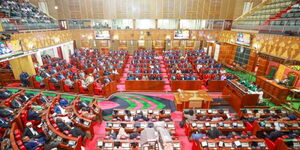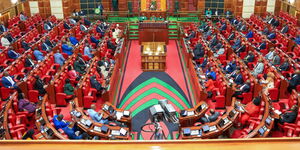Electricity bills are set to inch upward for Kenyan households in October, as the Energy and Petroleum Regulatory Authority (EPRA) has approved new pass-through costs.
A gazette notice on Friday, October 11, revealed that the foreign exchange adjustment for electricity has climbed to Ksh114.89 per kWh, up from Ksh103.32 last month. This change marks another step up for power bills, with the forex component rising even as the shilling has held steady against the US dollar at Ksh129.19.
While the fuel cost charge has seen a slight dip, dropping to Ksh3.39 per unit from Ksh3.43, the higher forex charges are set to hit households that consume between 30 and 100 units of electricity the hardest.
The increase means that for every Ksh1,000 spent, consumers will now receive approximately 40.88 units of power, down from 41.03 units in September. The impact will be felt by low-income households too, with those using up to 30 kilowatt-hours per month getting 25.69 units for every Ksh500, slightly fewer than last month’s 25.8 units.
The rise in forex adjustment comes at a time when the cost of electricity has generally been declining throughout the year. January saw prices for middle-income households peak at Ksh36.81 per unit, but they have since fallen to Ksh30.13.
July also recorded a significant nine per cent drop in costs for households consuming 200 units, with bills decreasing from Ksh6,250.90 in June to Ksh5,663.
Power costs are heavily influenced by factors such as the fuel cost charge, which varies depending on thermal power generation, and the forex adjustment, tied to the shilling’s fluctuation against major currencies.
Despite a steady shilling, the forex costs have risen, signalling possible pressure on Kenya Power, which passed 900 million kilowatt-hours in sales for the first time in July.
Electricity generation from hydroelectric sources has been robust, recording 358.23 million kilowatt-hours in July, up from 254.51 million in January. This shift away from thermal power has contributed to lower fuel cost charges throughout the year. However, with the new forex adjustment, households will see a slight reversal in this trend.
Kenya Power collects various charges to meet electricity production costs, including levies for thermal power, rural electrification funding, and regulatory costs. The forex adjustment has remained a pivotal factor in setting monthly power bills, with significant implications for households and the broader economy.
It remains uncertain how this modest increase will affect products, especially given the previous pattern of lower prices and strong hydroelectric production. Yet, the rise in forex charges may prompt closer scrutiny of the company’s pricing strategy, as consumers are already grappling with high living costs.












